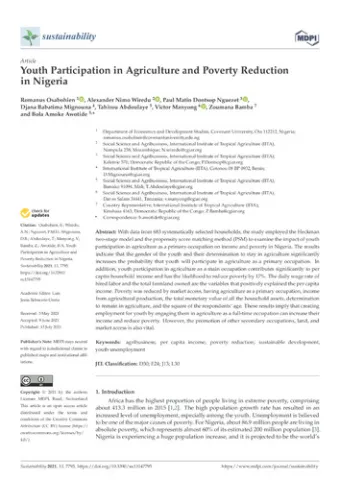Youth participation in agriculture and poverty reduction in Nigeria

Abstract
With data from 683 systematically selected households, the study employed the Heckman two-stage model and the propensity score matching method (PSM) to examine the impact of youth participation in agriculture as a primary occupation on income and poverty in Nigeria. The results indicate that the gender of the youth and their determination to stay in agriculture significantly increases the probability that youth will participate in agriculture as a primary occupation. In addition, youth participation in agriculture as a main occupation contributes significantly to per capita household income and has the likelihood to reduce poverty by 17%. The daily wage rate of hired labor and the total farmland owned are the variables that positively explained the per capita income. Poverty was reduced by market access, having agriculture as a primary occupation, income from agricultural production, the total monetary value of all the household assets, determination to remain in agriculture, and the square of the respondents’ age. These results imply that creating employment for youth by engaging them in agriculture as a full-time occupation can increase their income and reduce poverty. However, the promotion of other secondary occupations, land, and market access is also vital.
